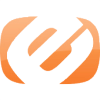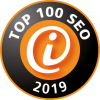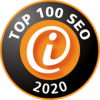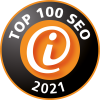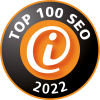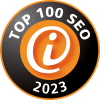When it comes to a poster child for successful B2B marketing, LinkedIn and Xing are often mentioned. While these platforms allow for the creation of online channels to generate leads and conversions from your target audience, it must be noted that higher costs could come into play here. Google Ads would be a cheaper alternative, as one example.
Since reaching new potential customers via marketing channels is not always easy, especially when it comes to targeting customers based on their occupation, B2B marketing is associated with a lot of effort, cost, and waste. However, target groups can be reached in a different and easier way. We have put together six tips for you on how to do this.
1) Address Your Competitors’ Customers Directly
Something that used to be cumbersome has now become much easier thanks to Google – plus, it also complies with data and privacy protection regulations. If you enter the domain of competitors using user-defined target groups, you can also address their customers.
2) Lookalike Audiences
We would like to introduce a new little feature: lookalike audiences. This function, which can be used via Facebook or Instagram Ads, for example, addresses potential new customers who are very, very similar interest-wise to one’s own customer base. So far, this function is pretty unknown. In order to use this function, a custom audience must be set up with Google in advance. This is managed via your Google Ads account under Customer List > Audience Manager > Shared Library. Audience properties can then be generated so that custom audiences can be used for search and display networks through Google Ads. However, to make use of this, certain requirements must be met, and you will need to submit an application of sorts.
3) Remarketing
Remarketing, or retargeting, is always an option when you want to get potential customers back on board. These could be customers who abandoned their shopping carts, visitors to important category pages, visitors with long session durations, or visitors who have already interacted with videos, ads, or forms on the website. Potential new customers can be targeted again, or just reminded that their activity on a company’s website may not have been completed yet.
4) Ad Scheduling
If you know when the most leads and conversions occur on your own website, you can make even better use of this knowledge by using advertising schedulers. This means that your own ads and advertisements are only played when your target group is online. For companies, this provides the advantage of ideal utilization and saving of costs (that you would much rather use elsewhere).
5) Demographic Bid Adjustment and Targeting
Your target audience in question can be narrowed down by defining the buyer persona in detail. Google Ads can optimally display ads if data and information about the buyer persona continue to be collected. Bid adjustment expands the scope of Google Ads formats from -90 to +900 percent, while bid targeting also takes into account factors such as age, gender, parental status, and household income.
6) Bing
Google’s competitors are often left behind in the dust, even though they can generate just as many leads and conversions. Bing is the second-largest search engine and has a market share of about 5 percent. Especially in B2B marketing, Microsoft Ads are really booming on Bing because so many companies rely on Microsoft. For example, the Windows 10 operating system has a market share of over 60 percent. In addition, Microsoft Edge is preinstalled on most electronic devices, so anyone who already uses Google Ads can easily upload their own data through the import function for Microsoft Ads.

